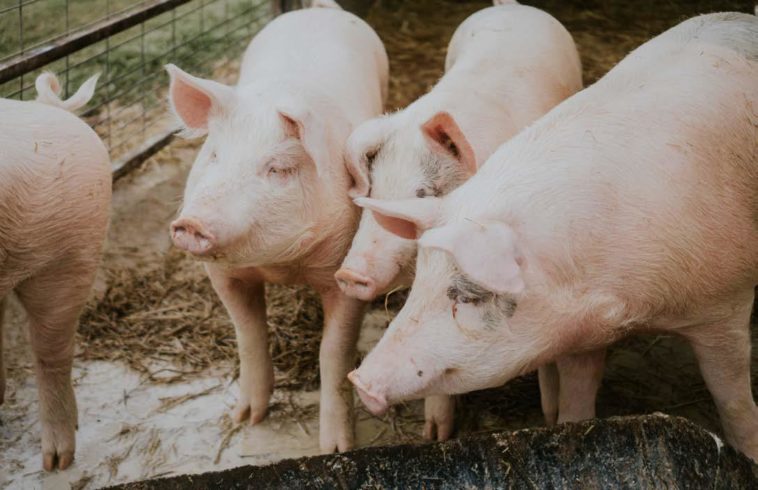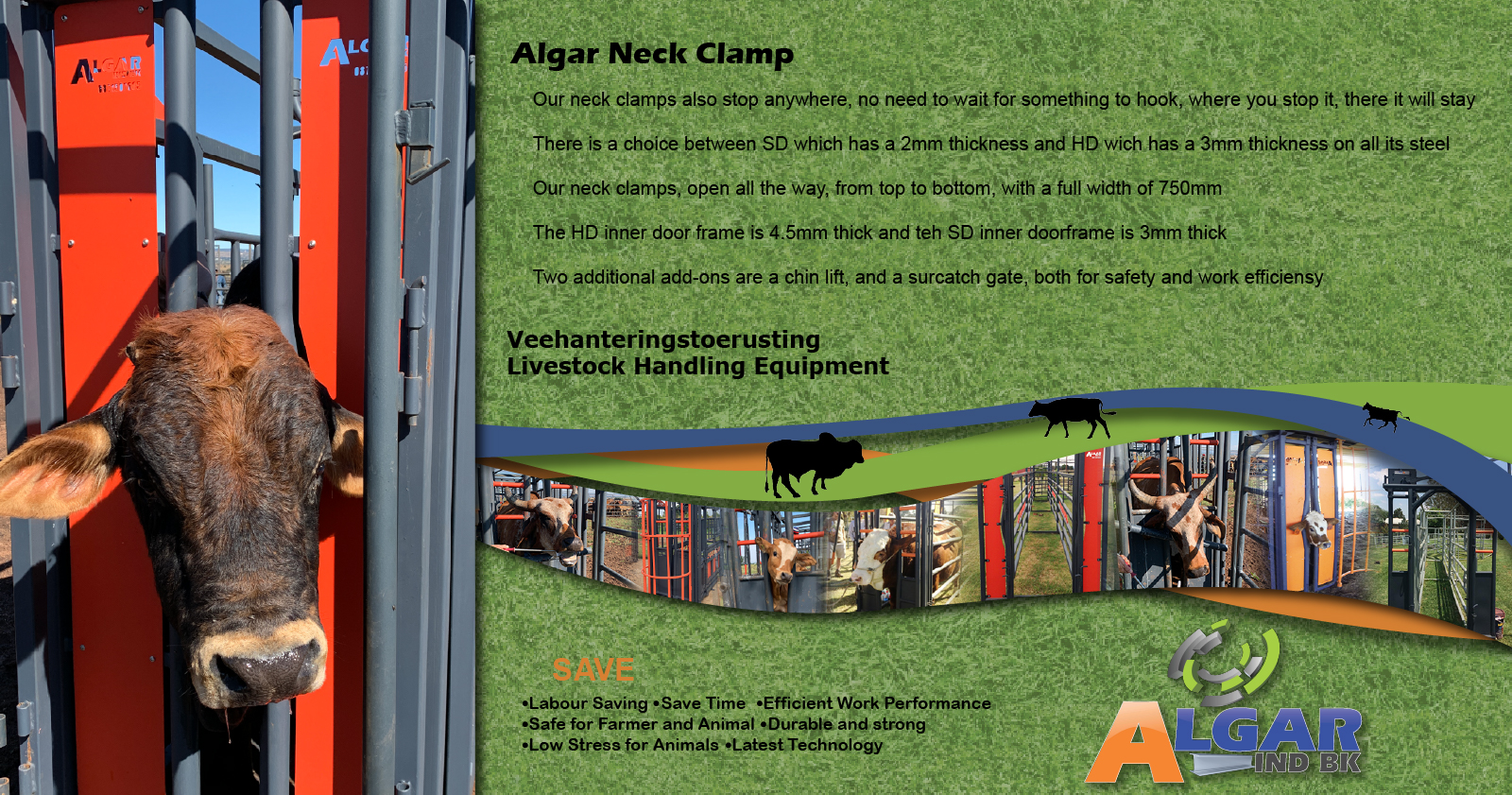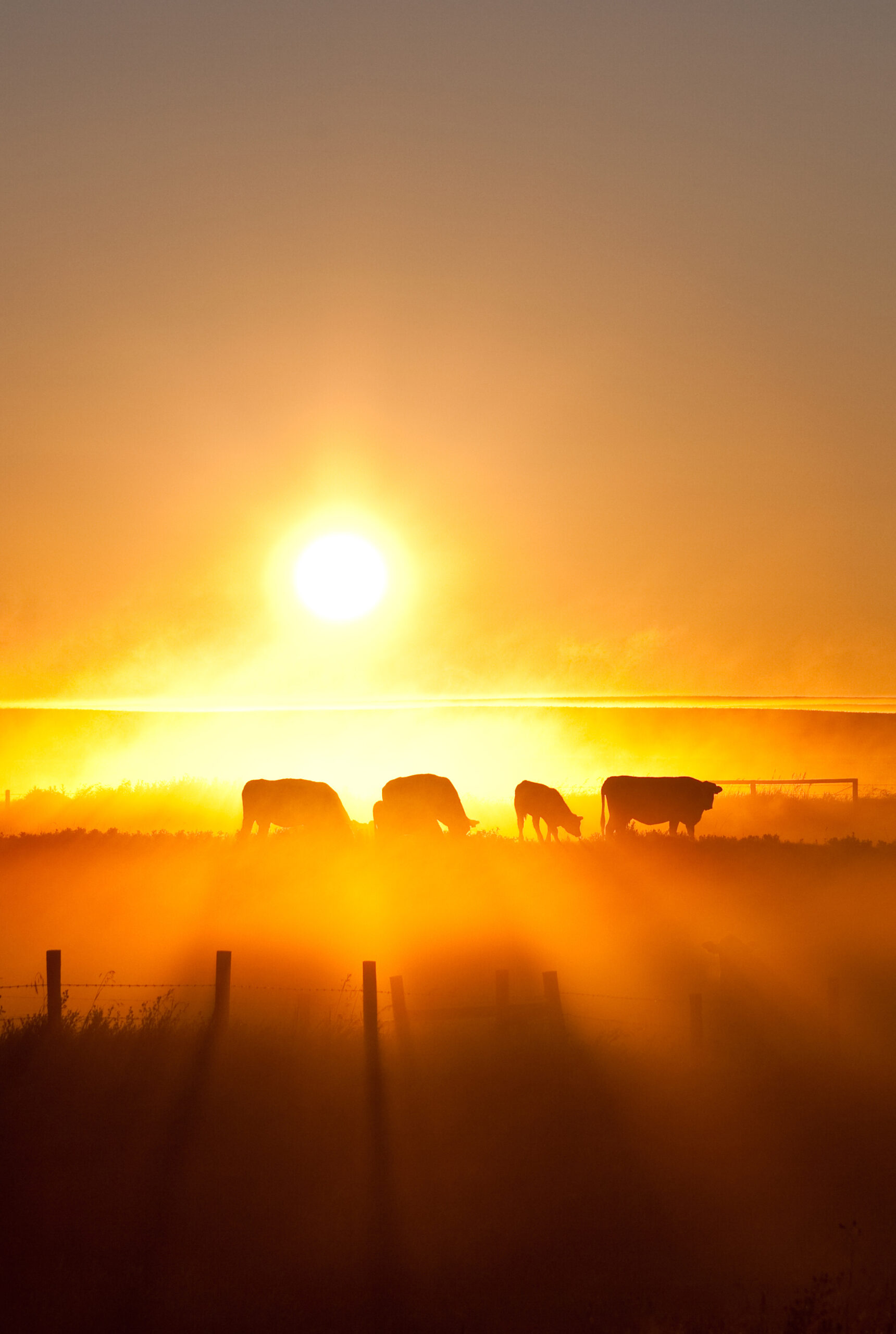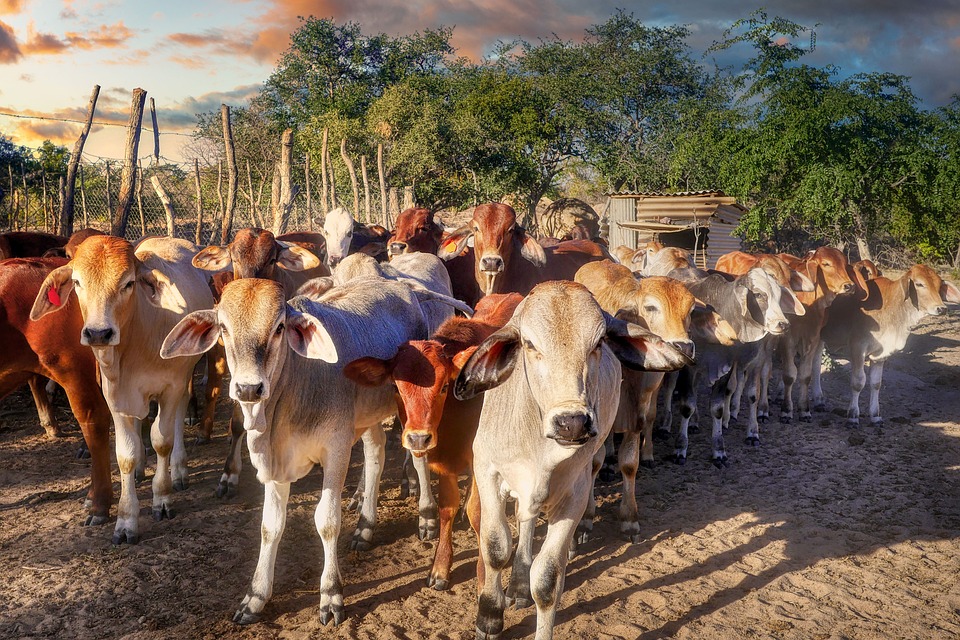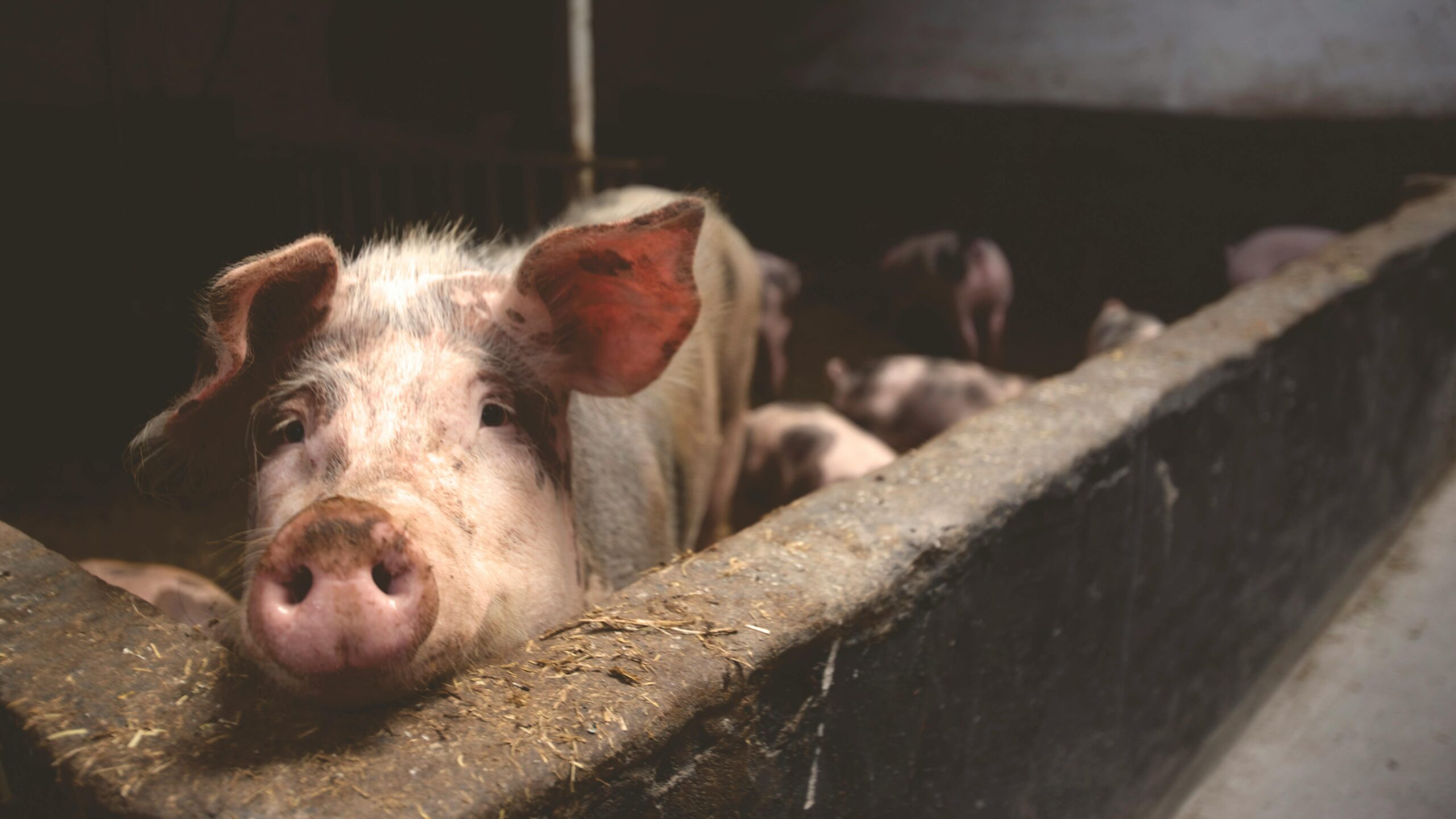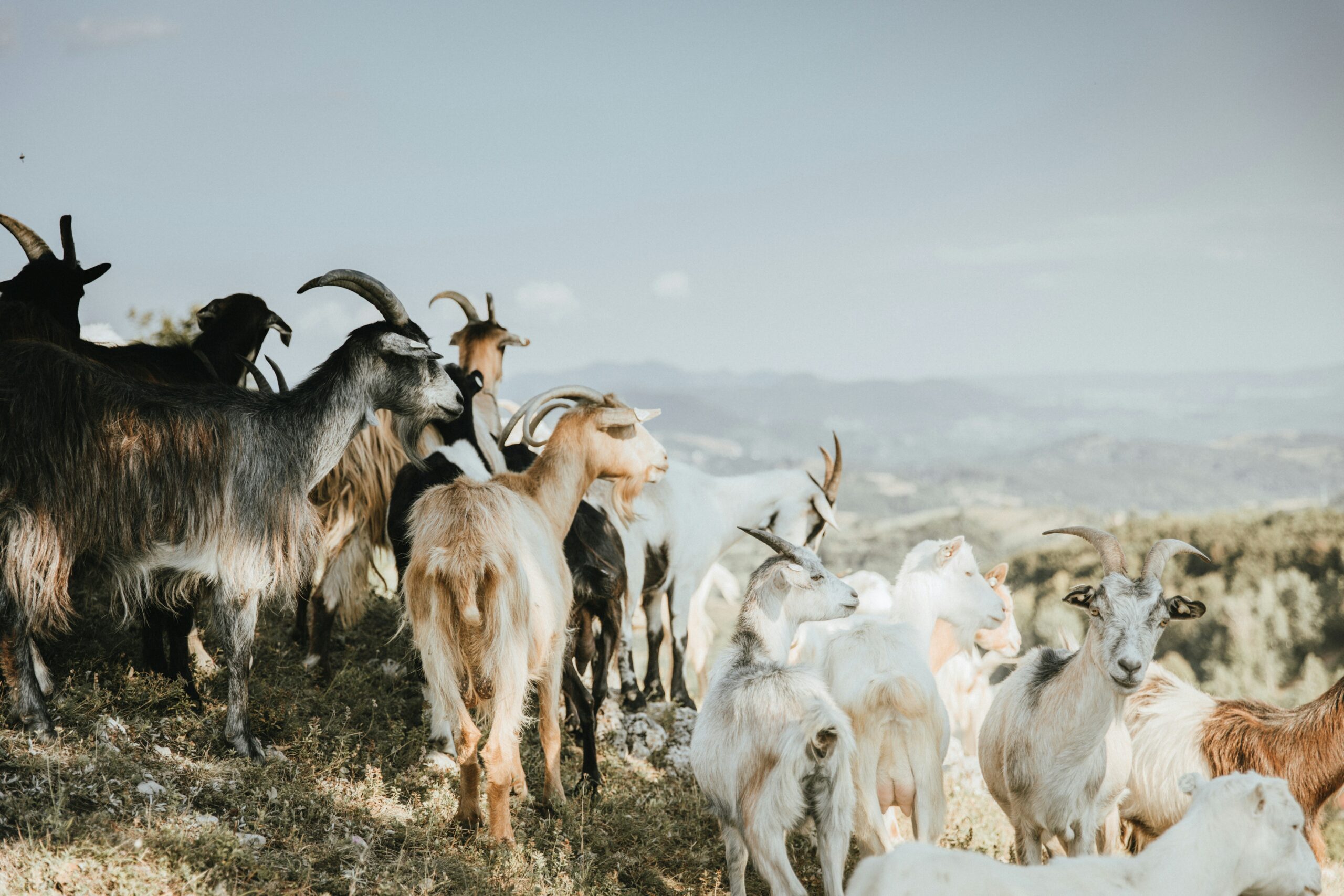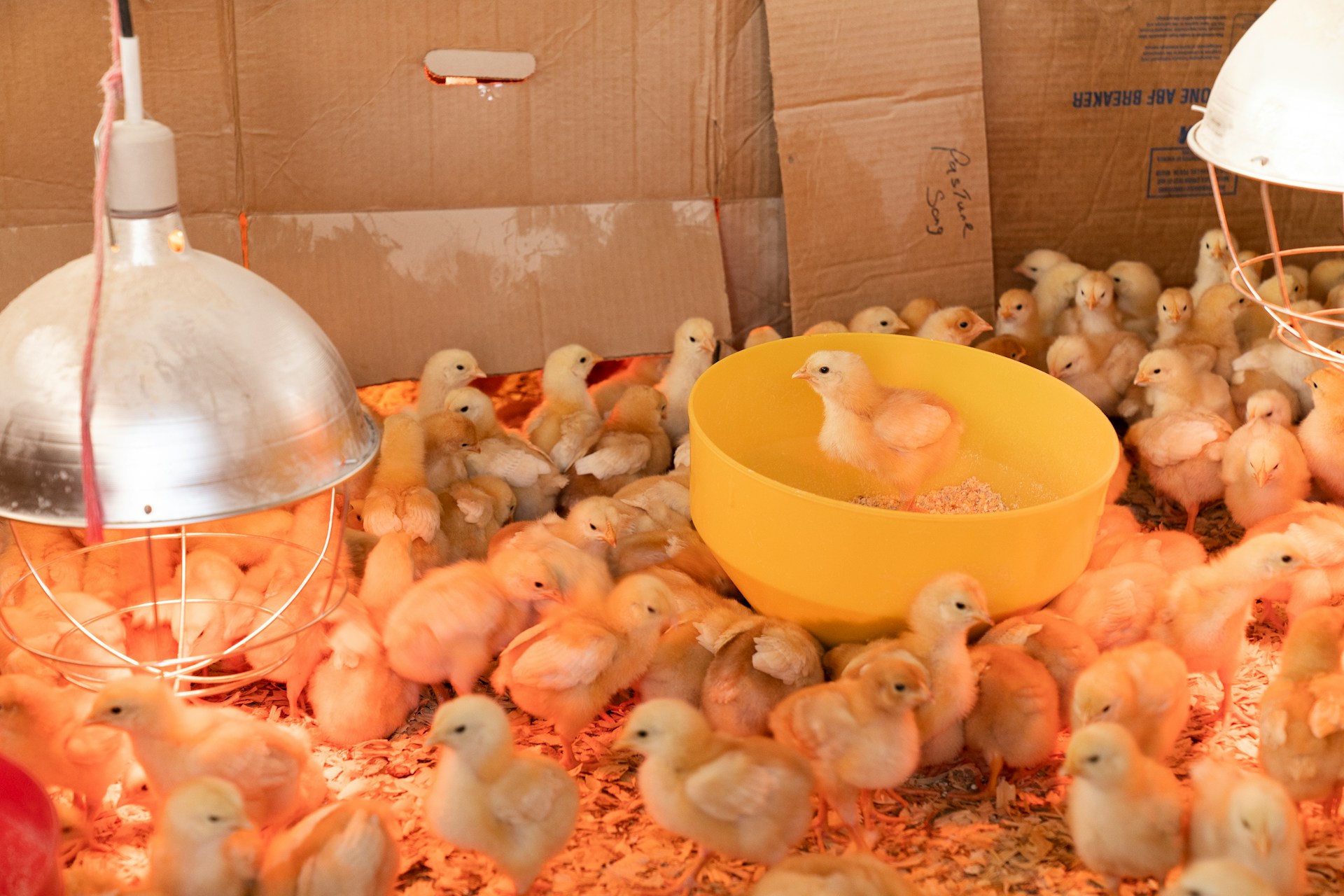Good, efficient housing makes pig management easier and helps the farmer to successfully rear 85% or more of all the live-born piglets to market weight in the shortest possible time.
Pigs at different stages of growth need different environments and temperatures. If they are to produce and grow to their maximum potential, piglets need special protection against very low temperatures. Growing and reproducing pigs must be protected against high temperatures. The houses must therefore be built in such a way that the pigs are protected against extreme temperatures and other bad weather conditions such as cold winds and continuous rain.
The boar pens
Boars are kept separately in their own pens. One boar is kept for every 15 to 20 sows. On a pig farm with only 20 sows it is advisable to keep at least two boars, namely a young not too heavy boar for young sows and gilts, and an older boar for older, heavier sows. You will therefore need two pens. Sows are brought to the boar to be serviced in the boar pen. This pen should be 10 m2, with the short side at least 2 m wide so that the boar can easily turn around in it.
The floor should be hard and must not be slippery. It should slope towards the sides and to the front so that urine and wastewater can drain into a shallow manure channel at the front of the pen. The walls must be of solid concrete or cement plastered brick. Gates can be made of round iron pipes, with a 20 mm diameter, spaced vertically not further apart than 75 mm. The height of the gate and also the walls should be 1 400 mm. A roofed sleeping area, about a third of the size of the pen, must be covered in bedding. Straw, grass, or sawdust can be used for this purpose.
A feed trough is placed in the sleeping area in such a way that it does not get filled with bedding. The trough for each boar should be 450 to 600 mm long, 150 to 200 mm high and 500 mm wide. Cool, clean water must be available at all times on the side where the gate is. The pig will also defecate in this area. A small water trough with a ball valve to control the level of the water or preferably a drinking nipple can be used. The nipple must be placed at a 90° angle with the vertical and between 550 and 650 mm from the floor.
Make sure that the boar pen is well ventilated. It is important that the temperature does not rise above 22 °C for long periods. If the temperature rises above 32 °C, the boar may become infertile for up to six weeks. On very hot days boars can be kept cool by sprinkling them with water.
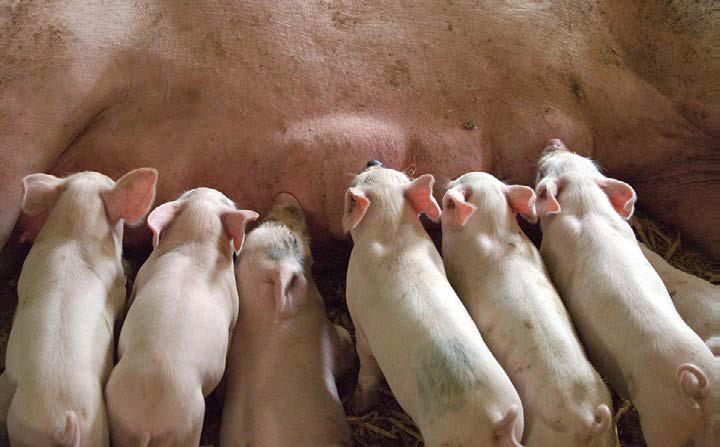
Pigs, and especially piglets, are extremely sensitive to temperature. If a farmer plans the housing on his pig farm properly, he can ensure that adequate temperatures are maintained to keep the pigs healthy and comfortable.
Gilts and dry sows
Gilts should be brought to the boar for the first time when they are eight months old. Dry sows come onto heat three to seven days after weaning when they have to be serviced by a boar again. Therefore, keep gilts and dry sows to be serviced in pens next to or near the boar so that they can be checked for heat daily until they are serviced.
Do not keep more than five gilts or sows in one pen. Gilts and sows should not be kept in the same pen. An area of about 5 m2 per pig is required. Therefore, to house five pigs, a pen with an area of approximately 25 m2 is required. The construction and specifications of the sow/gilt pen are the same as that of the boar pen.
Individual feeding is, however, important to ensure that each pig receives the correct quantity of feed every time. Enough trough space with partitions that allow the pigs to eat individually is therefore necessary. Nineteen days after the sows have been serviced by a boar, they are brought into contact with a boar again for five to seven consecutive days to make sure that they are pregnant. If the boar does not serve them again, it can be concluded that they are pregnant and they can then be placed in the pregnant sow pen.
Pregnant sows
Pregnancy lasts 114 to 116 days. Sows are put in the pregnant sow pen about 24 days after service and are only moved to the farrowing pen seven days before they give birth. They stay in these pens for about 85 days. The pens can be similar to dry sow pens. Provided the sows are about the same size, up to five pregnant sows can be kept in one pen. To make sure that each pig receives the correct quantity of feed, provision should again be made for individual feeding. The construction of this pen is also similar to that described for boar pens. At least two and preferably three pens are needed.
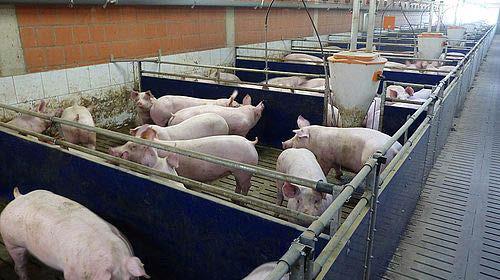
The pens in the finishing house must be large enough to keep up to 12 pigs per pen until they reach an average weight of 90 to 110 kg. The floor should be sloped to ensure that dung and wastewater can be washed away. Feeders need to be placed near the isle for easy refilling. Photo credit: https://cdn.bigdutchman.com/
Farrowing pens
The farrowing pen is the most important pen on the farm. It has to be designed in such a way that the right temperature is provided for the sow and her piglets during the first seven to 10 days after birth, while trampling and overlying is prevented as far as possible. It is advisable to build a farrowing house containing five or six farrowing pens. A five-pen house should be 13,25 m long, and a six-pen house 15,5 m. The width in both cases should be 4 m. Each pen will be 2 x 2,25 m with a 1 m wide feed passage on the northern side of the pens and a 1 m wide dung passage on the southern side. The entrance must be on the short side of the building with a 1 m space between the outside wall and the first pen.
Weaner and finishing house (growing pigs)
Piglets are weaned when they are 28 days old. They must therefore be looked after with care for at least another four to six weeks until they are 10 weeks old. They must be kept in pens at a temperature of 17 to 25 °C, and draughts and wet conditions should be prevented.
It is advisable to keep the growing and finishing pigs in pens similar to those used for weaners. A finisher house with 20 pens must therefore be built. Each pen must be large enough to house a litter of 10 to 12 pigs, kept in the pen from the age of four weeks until they are sold at a live weight of 90 to 110 kg. Two rows of 10 pens are built in the house. The building will be 40 m long and 9 m wide. The individual pens should be 12 m2 with 1 m high concrete walls, and two 1 m wide dung passages along the north and south walls of the building with a feeding passage, and 1 m wide in the middle between the two rows of pens. The entrance to the building is again on the short side of the building with a 1 m space between the outside wall and the first pen linked to the feed and dung passages.
For further information, contact your animal health technician, state or private veterinarian or Animal Health for Developing Farmers ARC Onderstepoort Veterinary Institute on +27(0)12-529-9158, or The Resource Centre, +27(0)12-319-7141 or +27(0)12-319-7085.
We thank the South African Department of Agriculture for the information provided to the readers of Botswana, Namibia, and Zimbabwe in this series of articles. For more information, visit their website at https://www.daff.gov.za/.

